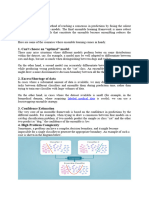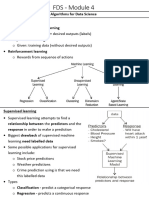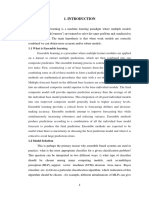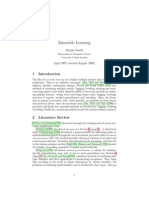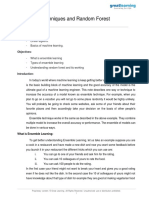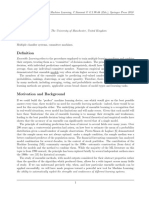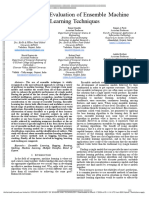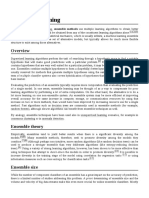0% found this document useful (0 votes)
144 views2 pagesEnsemble Methods - Foundations and Algorithms
Zhi-Hua Zhou's book 'Ensemble Methods: Foundations and Algorithms' provides a comprehensive overview of ensemble methods, including boosting and bagging, and discusses various combination techniques for improving model accuracy. The book covers theoretical foundations, practical applications, and advanced topics like semi-supervised learning and clustering ensembles, making it suitable for both researchers and practitioners. While it excels in clarity and depth, the reviewer notes a lack of coverage on statistical methods and software references, suggesting these could be addressed in a future edition.
Uploaded by
Tahiru Abdul-MoominCopyright
© © All Rights Reserved
We take content rights seriously. If you suspect this is your content, claim it here.
Available Formats
Download as PDF, TXT or read online on Scribd
0% found this document useful (0 votes)
144 views2 pagesEnsemble Methods - Foundations and Algorithms
Zhi-Hua Zhou's book 'Ensemble Methods: Foundations and Algorithms' provides a comprehensive overview of ensemble methods, including boosting and bagging, and discusses various combination techniques for improving model accuracy. The book covers theoretical foundations, practical applications, and advanced topics like semi-supervised learning and clustering ensembles, making it suitable for both researchers and practitioners. While it excels in clarity and depth, the reviewer notes a lack of coverage on statistical methods and software references, suggesting these could be addressed in a future edition.
Uploaded by
Tahiru Abdul-MoominCopyright
© © All Rights Reserved
We take content rights seriously. If you suspect this is your content, claim it here.
Available Formats
Download as PDF, TXT or read online on Scribd
/ 2










